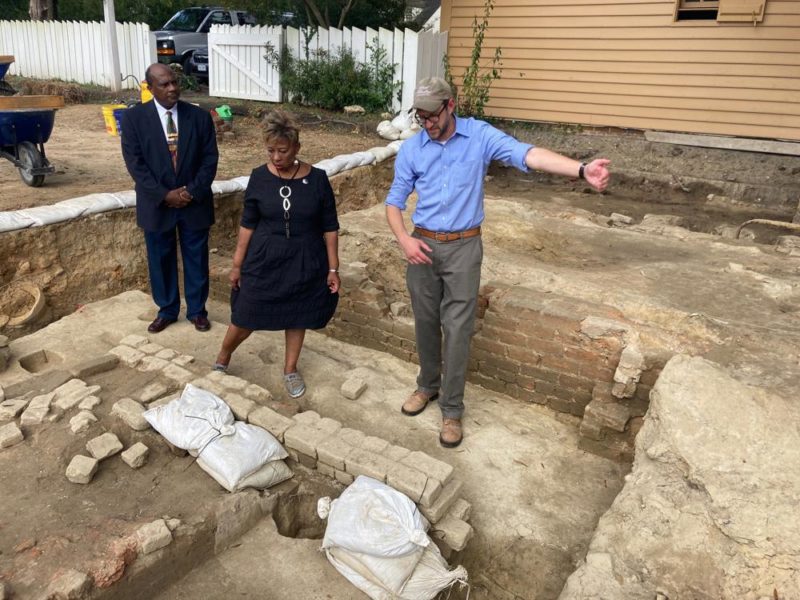Excavation of graves begins at site of colonial Black church
Share
Explore Our Galleries
Breaking News!
Today's news and culture by Black and other reporters in the Black and mainstream media.
Ways to Support ABHM?
By Ben Finley, AP

Archaeologists in Virginia began excavating three suspected graves at the original site of one of the nation’s oldest Black churches on Monday, commencing a monthslong effort to learn who was buried there and how they lived.
The First Baptist Church was formed in 1776 by free and enslaved Black people in Williamsburg, the colonial capital of Virginia. Members initially met secretly in fields and under trees in defiance of laws that prevented African Americans from congregating.
A total of 41 apparent burial plots have been identified. Most are 4 to 6 feet (1.2 to 1.8 meters) long and up to 2 feet (0.61 meters) wide. The soil is discolored in places where holes were likely dug and filled back in. Only one grave appears to be marked, with an upside-down empty wine bottle.
[…]
First Baptist’s original church was destroyed by a tornado in 1834. The second structure, built in 1856, stood there for a century. That building was bought in 1956 and razed to build a parking lot for Colonial Williamsburg, a living history museum that was expanding at the time and that now has more than 400 structures.
For decades, the museum failed to tell the stories of colonial Black Americans — many of them enslaved — who made up more than half of the 2,000 people in Virginia’s 18th century capital. But in recent years it has made an effort to tell a more complete story, placing a growing emphasis on African-American history.
Learn more about this excavation.
This excavation could reveal parts of Black history that have been whitewashed, something that continues today. Check out our online exhibits for more Black history.
Our breaking news page also preserves the stories of Black America.









Comments Are Welcome
Note: We moderate submissions in order to create a space for meaningful dialogue, a space where museum visitors – adults and youth –– can exchange informed, thoughtful, and relevant comments that add value to our exhibits.
Racial slurs, personal attacks, obscenity, profanity, and SHOUTING do not meet the above standard. Such comments are posted in the exhibit Hateful Speech. Commercial promotions, impersonations, and incoherent comments likewise fail to meet our goals, so will not be posted. Submissions longer than 120 words will be shortened.
See our full Comments Policy here.